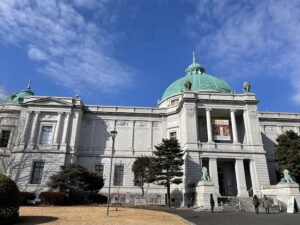
This exhibition presents traditional Japanese performing arts that have been collectively added to the UNESCO Intangible Cultural Heritage list, and we can learn aesthetics and techniques unique to each of them.
It is constructed by 5 parts, Kabuki, Bunraku, Noh and Kyohei, Gagaku, Kumi-odori.
In each part, the performing stage is featured, on which visitors can stand and experience the space.
Moreover, there are displayed costumes, props, and musical instruments used during actual performances.
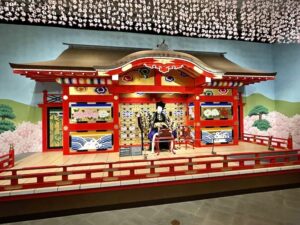
Kabuki
Kabuki is a classical form of Japanese musical. It is known for its heavily-stylized performances, the often-glamorous costumes worn by performers, and the elaborate characteristic makeup worn by some of its performers.
Kabuki performance is thought to be originated in the very early Edo period (1603 – 1868) when founder Izumo no Okuni formed a female dance troupe who performed dances and light sketches in Kyoto.
The art form had later developed into its present all-male theatrical form after women were forbidden to perform in kabuki theatre in 1629.
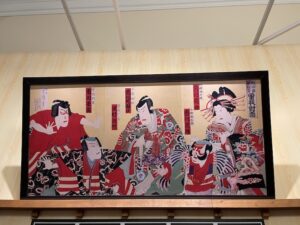
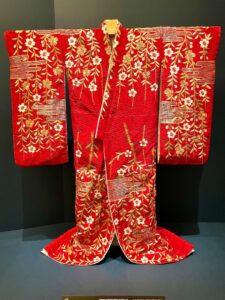
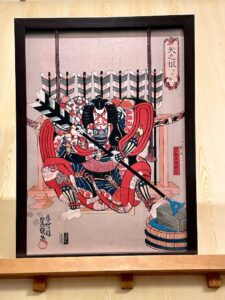
At this exhibit, we can see how they stand on the stage from the behind, historical performing video by great actors, the detail of the luxurious costumes and props, and sings from about 200years ago.
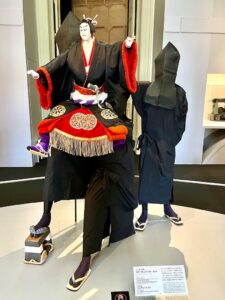
Bunraku
Bunraku, also known as Ningyō jōruri, is a traditional Japanese puppet theatre, and it was founded in Osaka in the 17th century. This performance consists of puppeteers, chanters, shamisen, or other instrumental musicians.
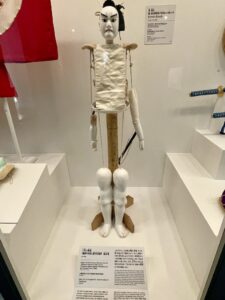
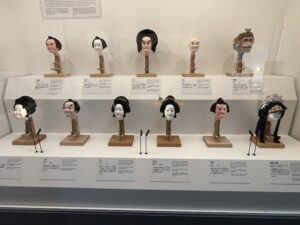

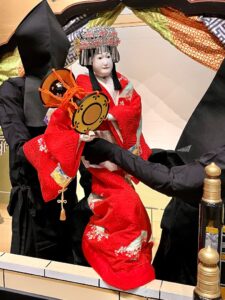
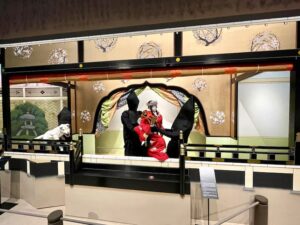
Bunraku is a puppet performance. However, the story is not for children, rather than some human drama, like soap operas. We could check the inside of the puppets or how the puppets are manipulated in this exhibit.
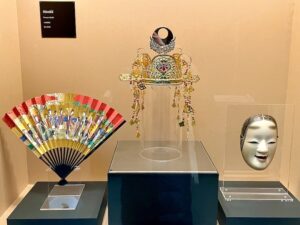
Noh
Noh is a major form of classical Japanese musical drama, started in the 14th century. This performance is made-up dance, music, and songs. The performers use unique masks and dance slowly. Zeami and his father Kan’ami brought Noh to its present-day form from Middle-Ages.
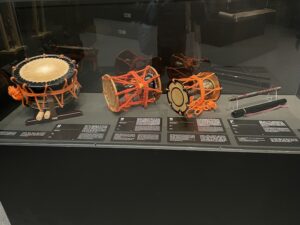
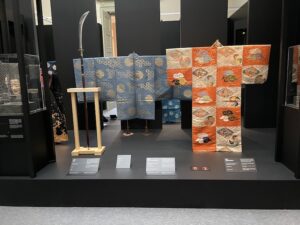
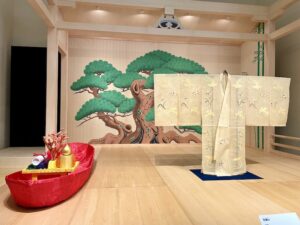
Noh’s masks are very various, like beautiful young girl face, funny male face, or horrible demons’ face. We can try to wear some masks at this part.
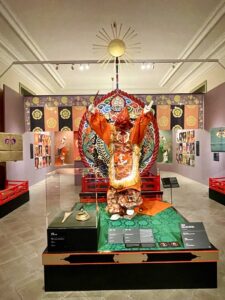
Gagaku
Gagaku is classical Japanese court music. It was brought to Japan from China in the 8th century. The meaning of Gagaku is literally ‘elegant music’. Gagaku performance is made up of dance and concert. Now Gagaku is performed at ceremonies of New Year, weddings, or at Shinto shrines.
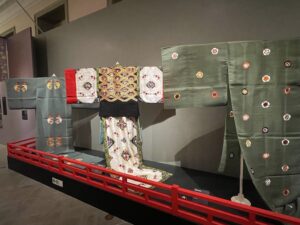
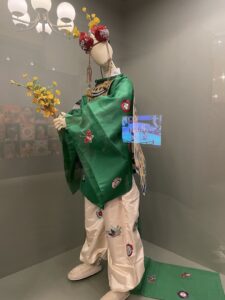
The gorgeous dancer’s costume and traditional musical instrumentals are highlights at this corner.
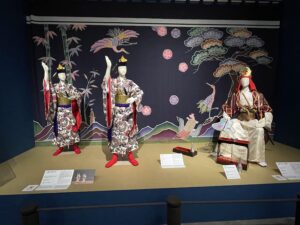
Kumiodori
Kumiodori is Okinawa’s local performance. During the Ryukyu Kingdom era (from 1429 to 1879), the Ryukyuan performing arts were created in Okinawa. The Kumiodori, an original Ryukyuan theatrical performance with singing and dancing, was refined entertainment for the court. It was also considered as the highest hospitality for entertaining Chinese Imperial envoys.
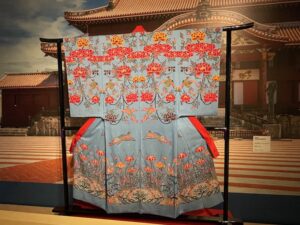
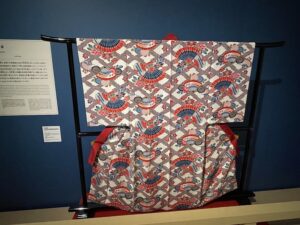
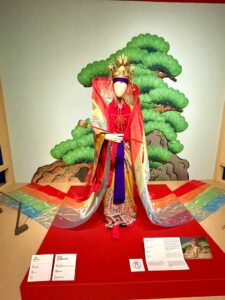
At this corner, we see the differences from the other Japanese performances. Ryukyu (old Okinawa) culture was much influenced by China. So Ryukyu people prefer intensive and vivid colors and bold lines. The Ryukyu music tone is completely different from other Japanese performances.
To enjoy each performance takes a long time. So this exhibit is very convenient to grab the general concept of Japanese traditional performances.
And if you have more interest in these performances, try to join some real stages!
https://www.tnm.jp/modules/r_free_page/index.php?id=2130&lang=en